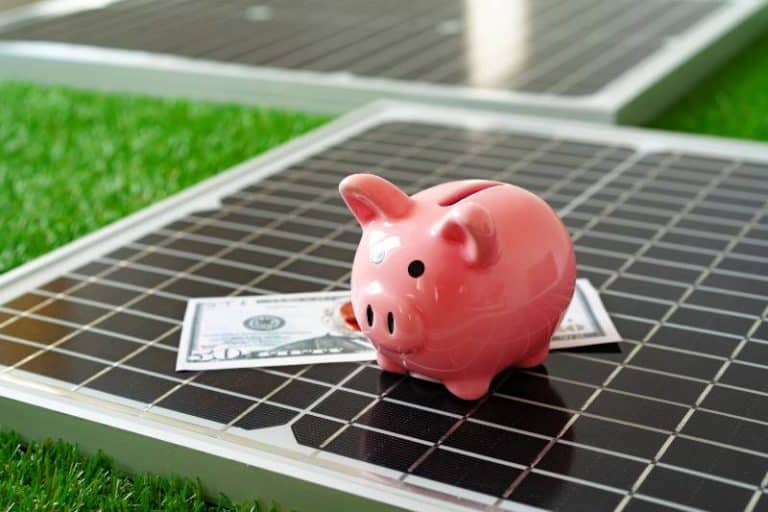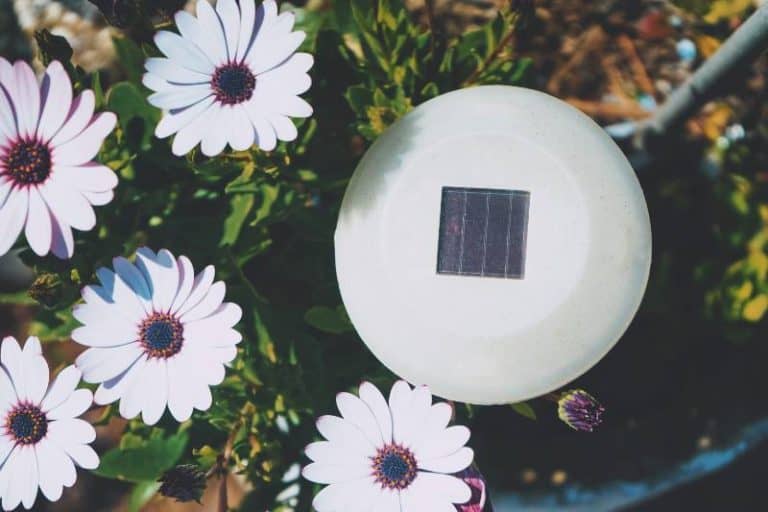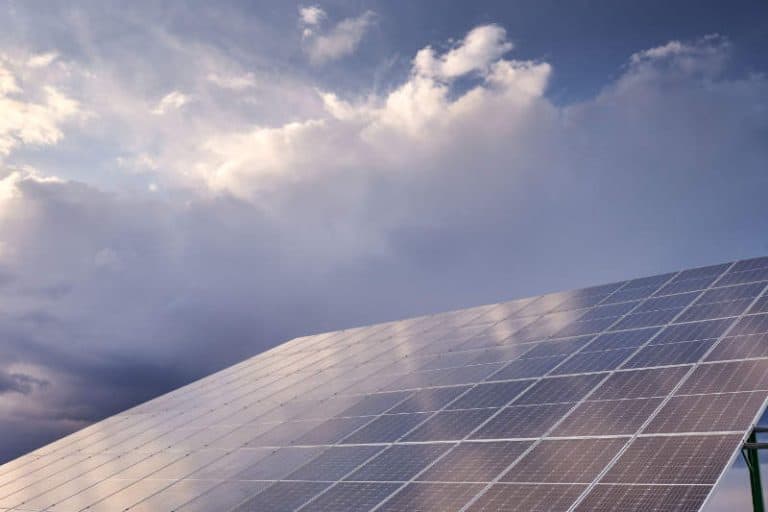Tiny Home, Big Impact: Portable Solar Panel Guide
Do you dream of living in a tiny home off the grid, powered by nothing but the sun? This might sound like something from an impossible future, but with today’s solar technology, it can be yours. Portable solar panels enable self-sufficient power for small-space dwellers, empowering them to minimize their footprint on terrestrial resources and enjoy greater freedom in where they choose to explore. Read on to learn more about how portable solar panel systems can revolutionize your tiny house adventures!
Using portable solar panels is an excellent way to provide power for tiny homes while traveling or in isolated areas with no access to conventional power sources. They are light, easy to move, and can be adapted to capture the most sunlight. By using portable solar panels, you can make use of a renewable and sustainable source of energy, which reduces your dependence on conventional power sources.
Key Takeaways
- Using portable solar panels can provide power for tiny homes without relying on traditional power sources.
- Because they’re lightweight and easy to move, they’re ideal for usage during travel or in out-of-the-way places.
- The portability of solar panels allows you to use renewable and sustainable energy sources, reducing your reliance on non-renewable sources.
Portable Solar Panel Options
Portable solar panels are a convenient way to harness solar energy when you are on the move or in locations without access to grid electricity. Here is a brief overview of the portable solar panel options:
- Folding solar panels: These solar panels are designed to be portable and lightweight. They have foldable segments that make them easy to carry and store. They are ideal for outdoor activities such as camping or hiking when you need a compact and portable power source. They come with built-in support stands and can charge devices such as smartphones, cameras, or power banks.
- Solar panel kits: Solar panel kits are complete systems that come with not only solar panels, but also additional components like charge controllers, inverters, and sometimes batteries. They are ideal for powering RVs, boats, cabins, or even off-grid homes. The kits come in different sizes and outputs. Some are portable enough for camping or emergency power needs, while others are designed for more permanent installations.
- Flexible solar panels: The solar panels made from thin and flexible materials are easy to adjust to uneven and curved surfaces such as boat decks and RV roofs. They are light in weight and also more portable than traditional solar panels. However, their efficiency and durability may not be as high as the rigid ones.
- Solar panel briefcases: These portable solar panels are designed like a briefcase, with two panels folding together and a handle for easy transport. They typically have a built-in charge controller, making them perfect for charging small devices like smartphones, tablets, or laptops. Solar panel briefcases are ideal for business travelers, campers, or anyone who needs a portable, easy-to-carry solar power solution.
To find the ideal portable solar panel for your requirements, take into account its size, weight, power output, and user-friendliness. Be sure to investigate the efficiency and durability of the solar cells incorporated in the panels as they can affect their overall effectiveness and longevity.
Installation and Setup
DIY vs Professional installation
When it comes to installing solar panels, you have the option to do it yourself (DIY) or hire a professional. Each approach has its pros and cons, and the choice depends on factors such as your skill level, budget, and the complexity of the project. Here’s a comparison of DIY versus professional installation:
DIY Installation
Pros:
- Cost savings: DIY installation can save you money on labor costs associated with professional installation.
- Customization: You have full control over the design and layout of your solar system, allowing you to tailor it to your specific needs.
- Learning experience: Installing solar panels yourself can be a rewarding learning experience and can give you a better understanding of how the system works.
Cons:
- Time-consuming: DIY installation can be time-consuming, especially if you’re not familiar with the process or lack experience in electrical work.
- Potential mistakes: Without professional guidance, there’s a higher likelihood of making mistakes that could reduce the efficiency of your solar system or even cause damage to your property.
- Warranty concerns: Some solar panel manufacturers may void their warranties if the installation is not done by a certified professional.
Professional Installation
Pros:
- Expertise: Professionals have the experience and training to ensure the solar system is installed correctly, safely, and efficiently.
- Faster installation: A professional installer can typically complete the installation process more quickly than a DIYer.
- Warranty protection: Hiring a certified professional can help maintain the warranty on your solar panels and other system components.
- Permitting and inspections: Professional installers are familiar with local building codes, permitting processes, and inspection requirements, making the process smoother and more efficient.
Cons:
- Higher cost: Professional installation can be more expensive due to labor costs.
- Scheduling: You may need to schedule the installation in advance, and you’ll have to coordinate with the installer’s availability.
When deciding between DIY and professional installation, consider your skillset, available time, budget, and the complexity of the project. If you’re confident in your abilities and have the necessary tools and resources, DIY installation can be a cost-effective option. However, if you’re inexperienced or unsure about any aspect of the installation process, it may be best to hire a professional to ensure a safe and efficient setup.
Safety precautions
To ensure safety during the installation and maintenance of a solar panel system, it’s important to follow these key safety precautions:
- Electrical safety: Before working on your solar system, make sure to turn off the electricity supply from the main panel. Additionally, to reduce the risk of electric shock, use insulated tools and wear rubber gloves when handling electrical components.
- Proper grounding: To minimize the risk of fire or electrocution, it is important to properly ground your solar system to prevent electrical faults.
- Roof safety: To ensure safety when installing solar panels on your roof, wear fall protection equipment like harnesses, lanyards, and anchors. Take care when working at heights and avoid stepping on the solar panels to prevent any harm or damage.
- Ladder safety: To climb up to the installation site, use a ladder that is sturdy and appropriately sized, with non-slip feet. While on the ladder, always keep three points of contact and avoid overreaching.
- Weather conditions: It is advisable to refrain from installing solar panels during unfavorable weather conditions including rain, strong winds, and lightning. This is because wet or slippery surfaces can heighten the chances of electrical hazards and falls.
- Load-bearing capacity: Make sure to confirm that your roof is strong enough to handle the weight of the solar panels and mounting equipment. If needed, seek advice from a structural engineer.
- Proper ventilation: To avoid overheating, make sure there is enough space and ventilation around the solar panels, inverters, and batteries.
- Battery safety: It is important to follow the manufacturer’s instructions for installing, maintaining, and ventilating batteries used for energy storage in your system. Be careful when handling the batteries as they can generate dangerous gases and may explode if not maintained correctly.
- Inverter Safety: Make sure to install the inverter in a location that is well-ventilated and not exposed to direct sunlight or anything that could easily catch fire. Additionally, ensure that the inverter is correctly connected to the solar panels and electrical system while being properly grounded.
- Regular maintenance: To ensure that your solar system stays safe and efficient, make sure to routinely check for any signs of wear and tear such as loose connections, damaged panels, or corrosion. If you find any issues, be sure to address them promptly.
- Professional help: To ensure your solar system’s safety and optimal performance during installation or maintenance, it’s best to seek guidance from a qualified solar professional if you have any doubts or questions.
Energy Storage and Usage
Battery storage options
Solar panel technology has come a long way in recent years. As we strive for cleaner and more sustainable energy solutions, solar panels have become an increasingly popular choice for homeowners and businesses alike.
However, one drawback to solar energy is that there is not so much energy quite available when the sun is not shining or it’s raining. That’s where energy storage options come into play.
With battery storage solutions, excess energy generated during the day can be stored and used during times when the sun isn’t shining. This means that solar energy can be used around the clock, reducing reliance on traditional energy sources and lowering energy bills.
Energy management and monitoring
Solar panels are an excellent way to harness the energy of the sun, but how do you know how much energy you’re getting from them? That’s where energy management and monitoring come in. By monitoring the output of your solar panels, you have a better understanding of how much energy you’re generating and, more importantly, how you can make the most of it. With energy management systems, you can track your usage and find ways to be more efficient with your energy consumption.
Maximizing efficiency and usage
Solar panels are a fantastic way to generate clean, renewable energy. However, to truly maximize their efficiency and usage, it’s important to understand how they work and how you can best utilize them. One of the most important factors in optimizing your solar panels is proper positioning. Panels should be placed in a location with the most direct sunlight possible, ideally facing southward in the northern hemisphere. Additionally, regular cleaning and maintenance can help to keep your panels working at peak performance.
Costs and Savings
Initial investment
Solar panels are a smart investment for sustainable energy consumption. However, the initial cost can present some hesitation for buyers. It’s important to note that this initial investment is just that- an investment. Solar panels can save a significant amount of money in the long run on energy bills and can even increase the overall value of your property. Plus, there are often government incentives and tax credits available for those who opt for solar. So while the upfront cost may seem daunting, it’s important to consider the long-term benefits and savings that come with investing in solar panels.
Potential energy savings
Switching to solar panels can have a significant impact on reducing your energy costs. By harnessing the power of the sun, you’ll be able to generate clean electricity that can power your home or business. Not only will you save money over time, but you’ll also be reducing your carbon footprint and contributing to a healthier planet. With advancements in technology, solar panels have become more efficient and affordable than ever before, making them a smart investment for your future.
Financial incentives and rebates
You can claim a tax credit on your federal income taxes for a certain percentage of the cost of a solar PV system you paid for. It’s called the federal residential solar energy credit. It’s worth noting that other types of renewable energy also qualify for similar credits, but we won’t be covering those in this guidance. The installation of the system must be completed during the tax year
.
If you had a solar PV system installed in 2020 or 2021, you’re eligible for a 26% tax credit. In August 2022, Congress extended the tax credit to 30% for systems installed between 2022 and 2032. The tax credit was also 30% for systems installed on or before December 31, 2019. The tax credit will decrease to 26% for systems installed in 2033 and to 22% for systems installed in 2034.
The tax credit can be claimed without any limit, but it will only be available until 2035 unless Congress decides to renew it.
Maintenance and Troubleshooting
Cleaning and upkeep
The most important step in maintaining your solar panels is keeping them clean. Dust, dirt, bird droppings, and other debris can accumulate on the surface of the panels and reduce their efficiency. Regularly cleaning your solar panels with a soft-bristled brush and water can help to remove any buildup and keep them working at their best.
It’s also important to periodically inspect your solar panels for any signs of damage, such as cracks or breaks in the glass, loose wiring, or corrosion on the metal components. If you notice any issues, it’s best to contact a professional to perform the necessary repairs.
In order to provide you with even more assistance, I have written an in-depth article that serves as a comprehensive guide, offering detailed instructions and valuable tips on the most effective methods for cleaning and maintaining your solar panels in pristine condition, make sure to check it out!
Common issues and solutions
Here are some common issues that you may encounter with solar panels and some possible solutions:
- Reduced energy production: If you notice that your solar panels are not producing as much energy as they used to, there could be a few potential causes. It could be due to a buildup of dirt or debris on the surface of the panels, shading from nearby trees or buildings, or a problem with the electrical connection. Cleaning the panels, trimming nearby trees, or contacting a professional to inspect the system can help identify and solve the issue.
- Faulty wiring: Regular inspections and maintenance are important to prevent damage caused by faulty wirings, such as decreased energy production, safety hazards, and system damage.
- Inverter failure: The inverter is an essential part of the solar power system that transforms the DC power from solar panels into AC power that can be utilized by your household. In case of an inverter malfunction, the solar system may switch off completely. If you observe that your solar panels are not generating electricity, it might be caused by an inverter failure. It is recommended to seek professional help to replace the faulty inverter.
- Physical damage: Although designed to be resilient, solar panels can still be harmed by severe weather, accidents, or falling objects. Physical damage such as cracks and dents can impede their performance and cause safety risks. It’s recommended to have a professional inspect the system if any physical damage is detected to decide whether repairs or replacements are needed.
Warranty and customer support
When you buy a solar panel system, make sure to think about the warranty and customer support provided by the manufacturer or installer. A reliable warranty can offer reassurance and coverage for possible problems or faults in the system.
Solar panel systems usually have warranties that cover the panels, inverter, and other parts for a specific number of years. The duration and contents of the warranty may vary depending on the manufacturer and the system model. Some warranties may also cover labor and installation.
It’s important to take into account the level of customer support provided by the manufacturer or installer in addition to the warranty. This could entail technical assistance, troubleshooting, and repair services. Having a dependable customer support team can assist you in promptly resolving any problems or worries you might have with your solar panel system.
To ensure the best value and protection for your investment in a solar panel system, be sure to thoroughly review the warranty and customer support policies. Look for a system with a strong warranty and a responsive customer support team.
Real-life Examples and Case Studies
Tiny homeowners’ experiences
Tiny homeowners are a growing group of people who choose to live in smaller, more sustainable homes that use fewer resources and generate less waste. Many tiny homeowners have turned to solar power as a way to generate clean, renewable energy for their homes.
One example is the tiny house built by Jenna Spesard and Guillaume Dutilh in Oregon. Their home is completely off-grid and powered by a solar panel system that they installed themselves. The system consists of six solar panels, a charge controller, and a battery bank, and provides enough energy to power all of their lights, appliances, and electronics. They have found that their solar panel system has allowed them to live comfortably and sustainably, without relying on traditional power sources.
Another example is the tiny house built by Bryce Langston in New Zealand. His home is also off-grid and powered by solar panels, and he uses a rainwater collection system to provide water for his home. Langston has found that his solar panel system has allowed him to live more independently and reduce his environmental impact. He also notes that the upfront cost of installing the solar panels was offset by the long-term savings on energy costs.
These examples demonstrate how tiny homeowners are using solar power to live more sustainably and independently. While the upfront cost of installing a solar panel system can be high, the long-term savings on energy costs and the benefits to the environment make it a worthwhile investment for many people.
Portable Solar Panels for Tiny Homes FAQs
What are the benefits of using portable solar panels for tiny homes?
Tiny homes can be powered conveniently and flexibly by using portable solar panels. These panels can be easily adjusted and relocated to take advantage of the sun’s maximum exposure. They can also be utilized to power appliances, electronics, and lights both on and off the grid. By using sustainable and renewable energy sources, dependency on traditional energy sources can be reduced.
What are the different types of portable solar panels available?
To clarify, there are various kinds of portable solar panels that you can choose from, such as folding, rollable, and backpack solar panels. Folding ones are conveniently sized and easy to carry, while rollable ones are light and bendable. Backpack solar panels are particularly made for hikers and campers, and can be effortlessly carried in a backpack.
How do I choose the right solar panel system for my tiny home?
If you’re selecting a solar panel system for your tiny home, take into account your energy usage, budget, and available space. Find a system that has the correct number of panels and adequate wattage to fulfill your energy needs. Additionally, consider aspects like sturdiness, warranty, and customer assistance.
How much do portable solar panels for tiny homes cost?
The price of portable solar panels for tiny homes can differ based on the system’s size, power rating, and brand. Smaller and simpler systems with one or two panels may cost a few hundred dollars, whereas larger and more powerful systems can cost several thousand dollars. In addition, there may be extra expenses such as batteries, charge controllers, and installation fees.
Can I install the solar panels myself or do I need professional help?
Although you can install solar panels by yourself, it is advisable that you seek assistance from a professional to make sure that the installation is safe and efficient. An expert installer can assist you in evaluating your energy requirements, selecting the appropriate system, and ensuring that the panels are correctly installed and linked to your home’s electrical framework.
Conclusion
Portable solar panels are an innovative and resourceful way to provide power for tiny homes that can be used to create sustainable energy options. Not only are they efficient, but they’re also lightweight and portable which makes them great for travel or hard-to-reach places.
Whether you’re trying to go off-grid or just want the freedom to explore, these solar panels offer a unique way to power your tiny home at an affordable cost. I hope this blog post has been an informative read and that you’re now ready to take on the challenge of creating a sustainable lifestyle with portable solar panels.
If you’d like to continue learning more about sustainability through renewable resources like solar energy, make sure to sign up for our monthly newsletter here at Electrikliving! Thanks for reading – till next time.






